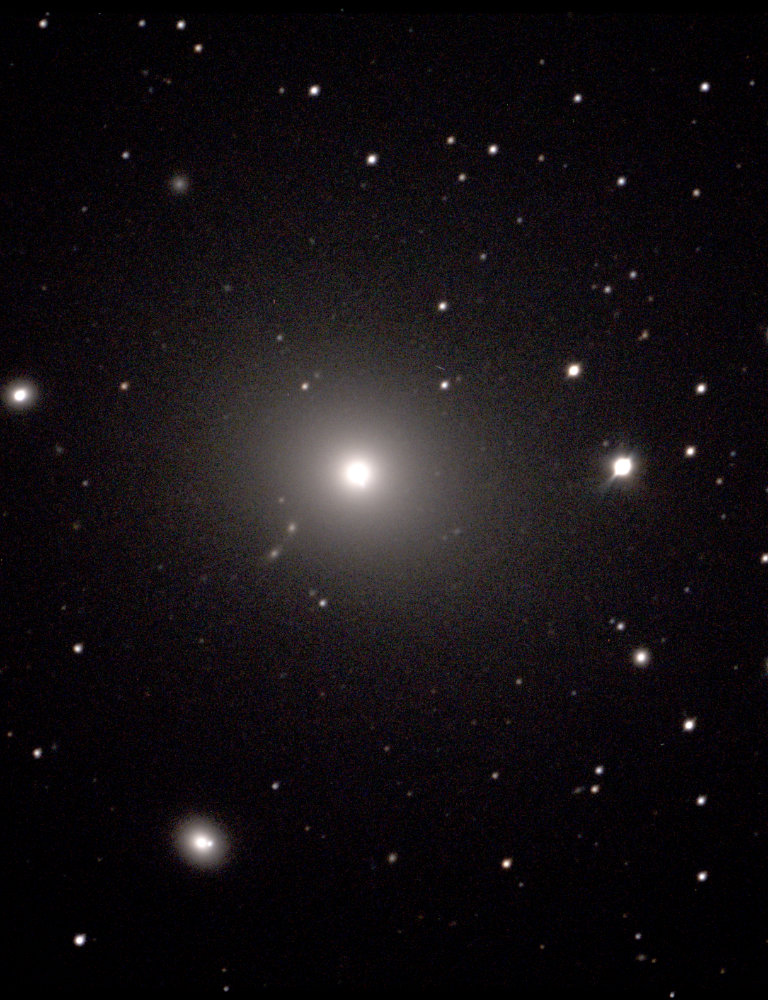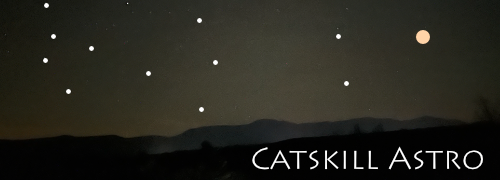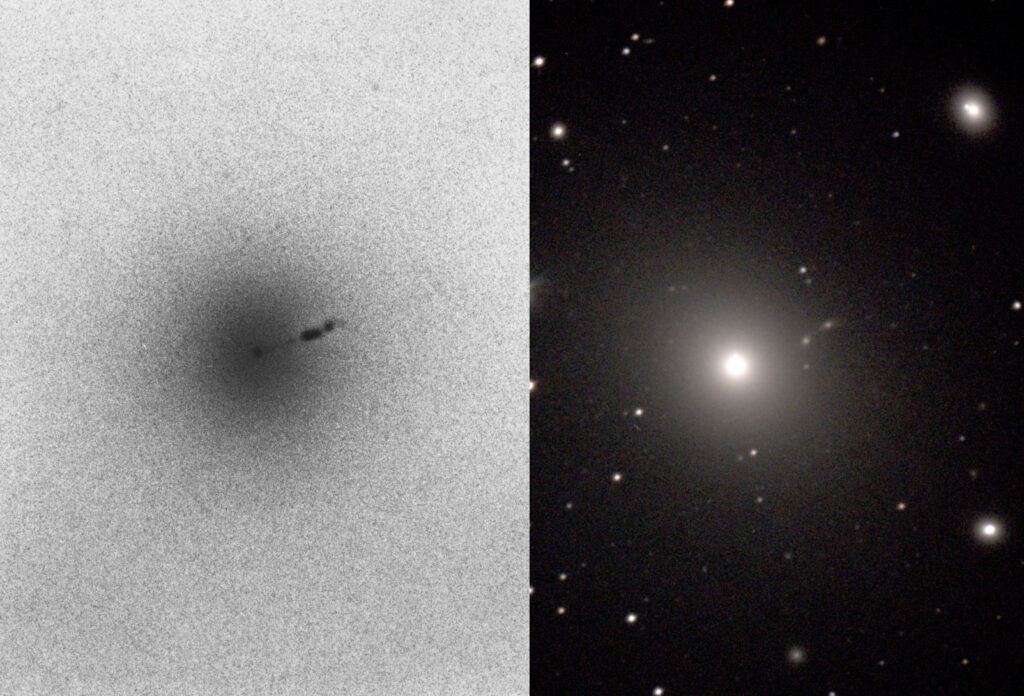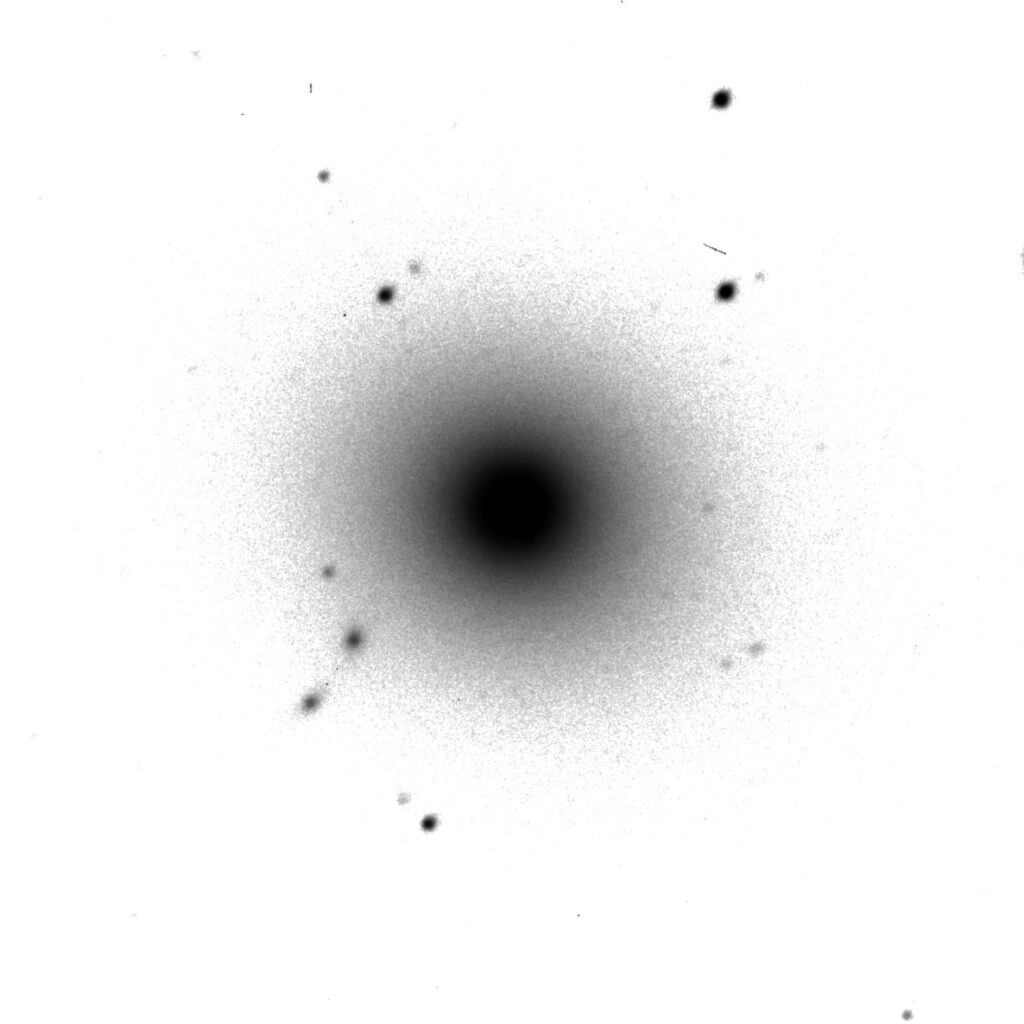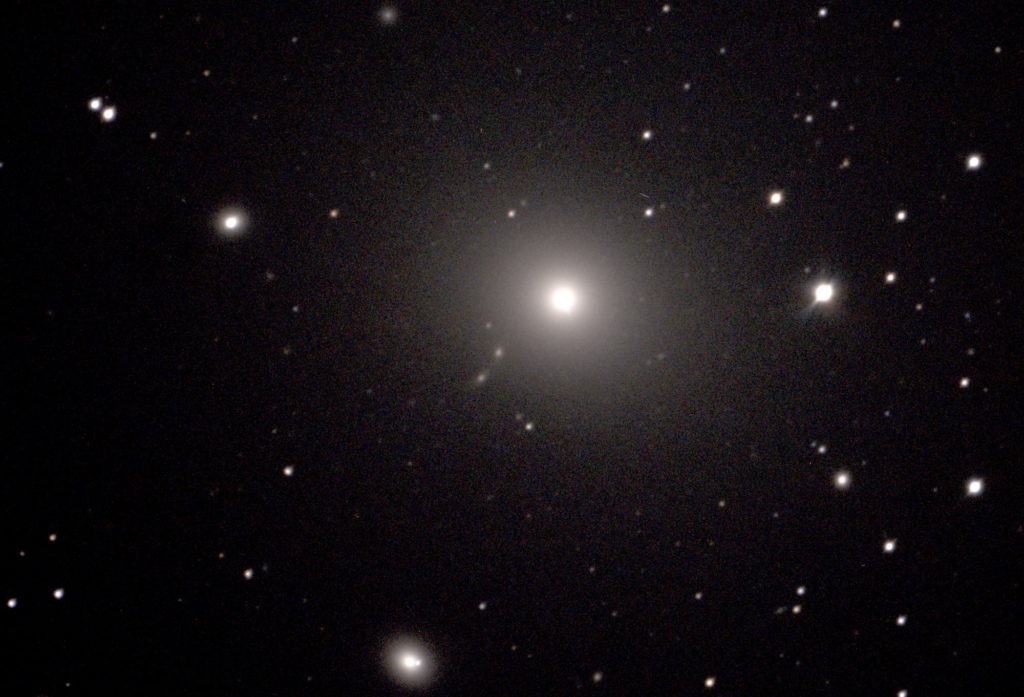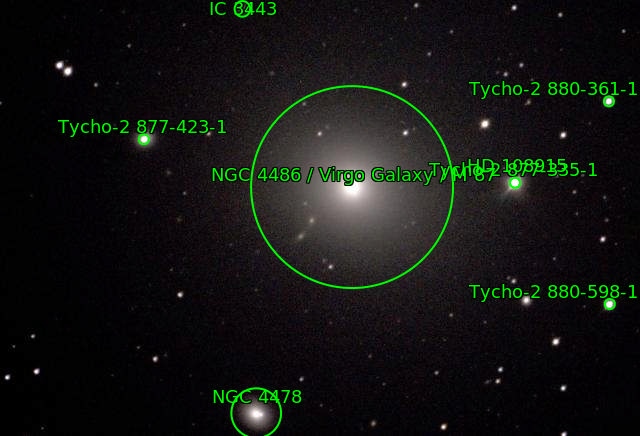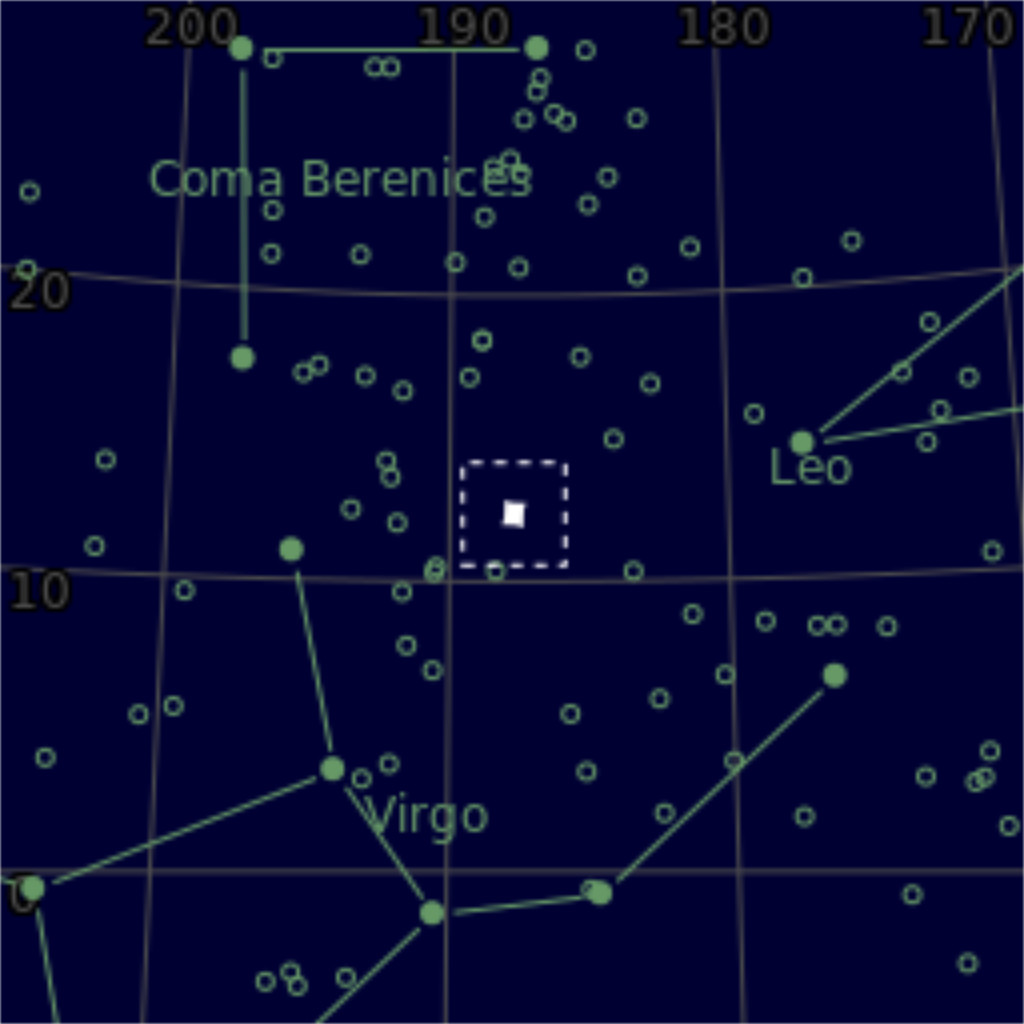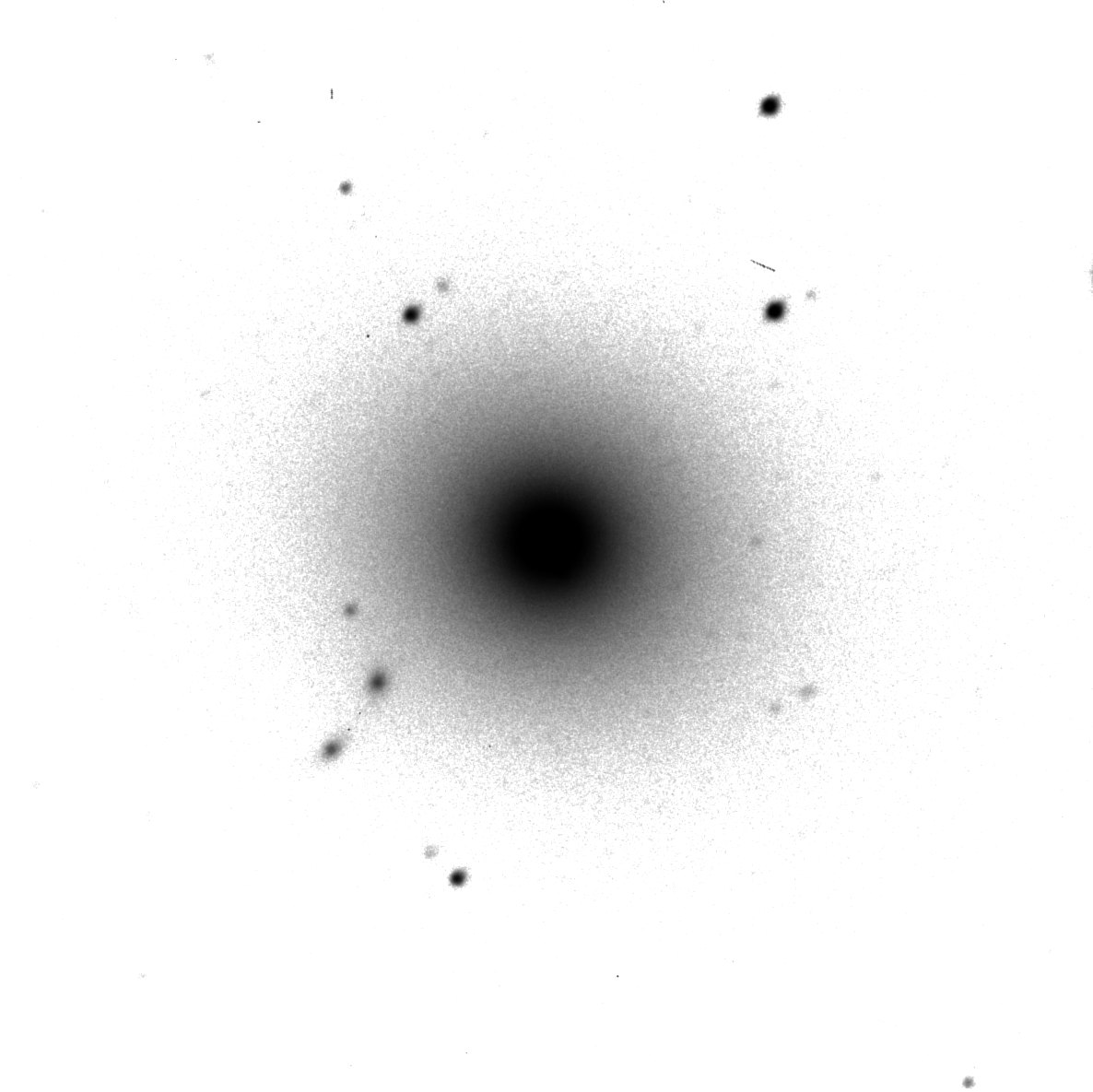| Description | The fourth of 9 entries added to the Messier catalog on March 8, 1781, also (#37) credited to Messier. "Nebula without star, in Virgo, below & very near a star of eighth magnitude.... This nebula appears at the same luminosity as the two nebulae Nos. 84 and 86." Halton Arp included M87 as Arp 152 in his Atlas of Peculiar Galaxies. He classified it with "Galaxies with Jets" and remarked "Short exposure to show jet. Virgo A radio source." <--> The toughest aspect for me was to set the black level appropriately to show the diffuse outer ring of this nebulous, elliptical galaxy while not obscuring the jet(s)... It's so large, I thought for a while my dark-subtraction in SharpCap was failing, and I was seeing amp glow! However, I was able to identify that the diffusion wasn't quite round, and not "quite" as large as uncontrolled amp-glow with my 294 sensor. This became obvious after about 15m of integration. The S/N ratio was so high, and since there is no structure to speak of in the outer disc, there seemed no advantage to continuing integration longer than the 25m once the two tiny galaxies, LEDA 139919 and UGC 7652, and the connecting jet were clear. Note that the "short exposure" Arp alludes to allows his image to show the jet right to the galactic center. My exposure wasn't so expert, and the inverted image is still blown out, but does appear to show the jet continuing a little deeper into the disk. Then a friend pointed out that it's actually second "jet" in this image that Arp did not detect: which appears as a tiny bump on the edge of the galactic core. You can see it the enlarged closeup is in the gallery. It is barely visible in the Arp photograph; note the Arp comparison is rotated 180° relative to the original capture, featured image, and jet enlargement. |
